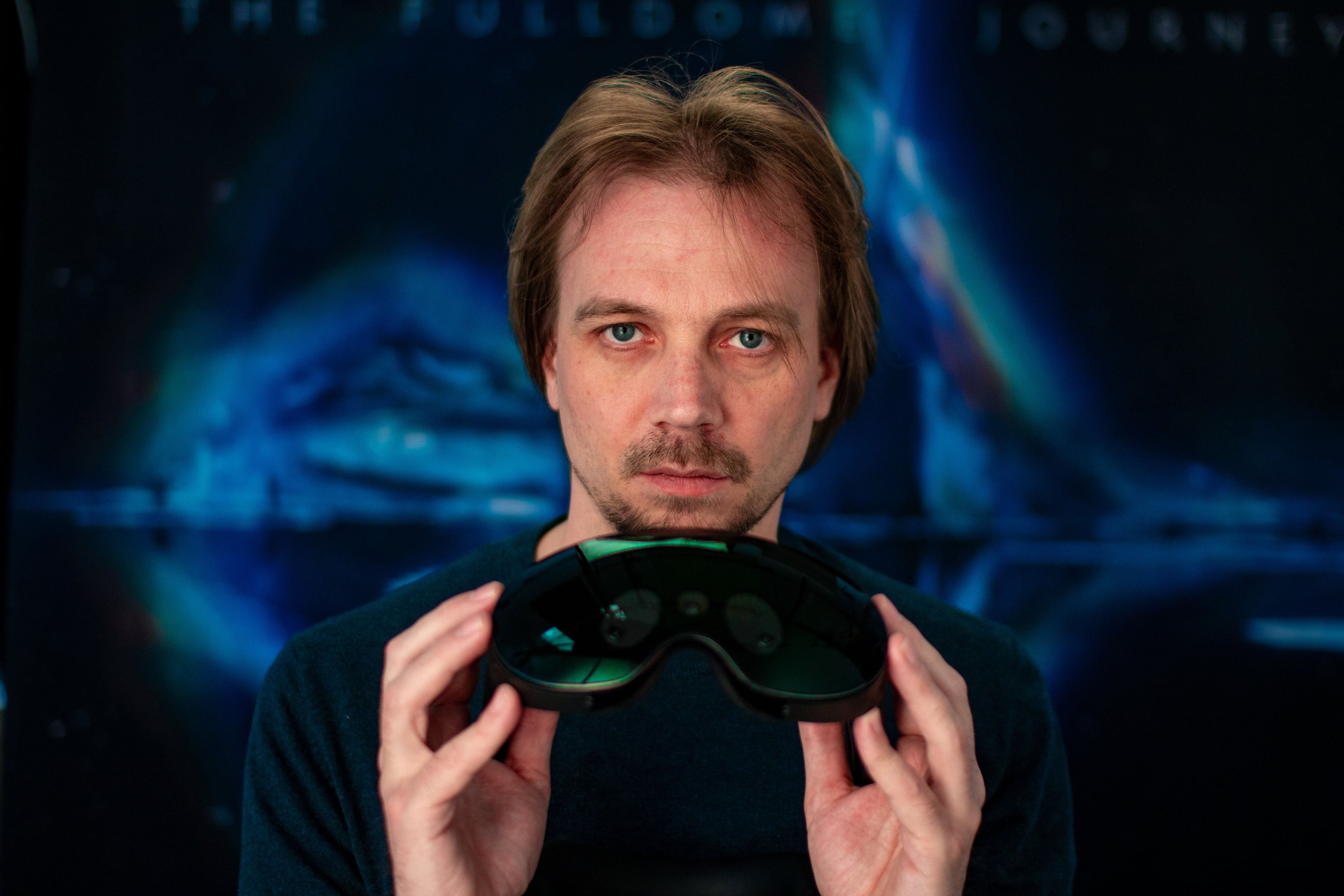
Enter the World of Julius Horsthuis
Written by: Dan Warren
A few weeks ago, around 8,000 people gathered at The Orion Amphitheater in Huntsville, Alabama for the latest Tipper & Friends extravaganza. What many of those attendees did not realize was just how lucky they really were. On nights two and three—for Tipper’s downtempo and ambient sets—world-renowned Dutch fractal artist Julius Horsthuis took the crowd on one of the most brilliant visual journeys we’ve ever seen (with the assistance of Datagrama on projection mapping as well as a visual b2b with Johnathan Singer on ambient night).
Julius Horsthuis has sent people traveling through unbelievably complex fractal worlds for over a decade. With a background in the film industry, Julius’s fractal worlds stand out for their cinematographic quality and abilities to connect with audiences on a deeper level. For Julius, fractals have sparked a never-ending quest for exploration. As he will tell you, he’s not creating these worlds, but rather discovering them. Julius gets to become the Director of these immersive films and controls the story, the lighting, and the ability to continue discovering more of these worlds.
Fractal art is different than your conventional art in that it's algorithm-driven, digital art, meaning there is a decent amount of math involved in bringing these fractal worlds to life on the grandest of scales. Fractal art is essentially “calculated” and then rendered as images or videos. While this might seem complex, Julius will tell you that you don’t really need to know that much math to be able to make fractals.
We had a chance to chat with the “Godfather of Fractals” himself and dive deep into his career, both in the film industry and on the visuals side. We also talk about his process for creating these amazing worlds, using a main piece of software called Mandelbulb 3D. Additionally, he reflects on his weekend at The Orion Amphitheater and what it was like to present his fractal worlds on such a big stage for Tipper. We can’t thank Julius enough for taking some time to speak with us and we hope you enjoy our conversation with him!
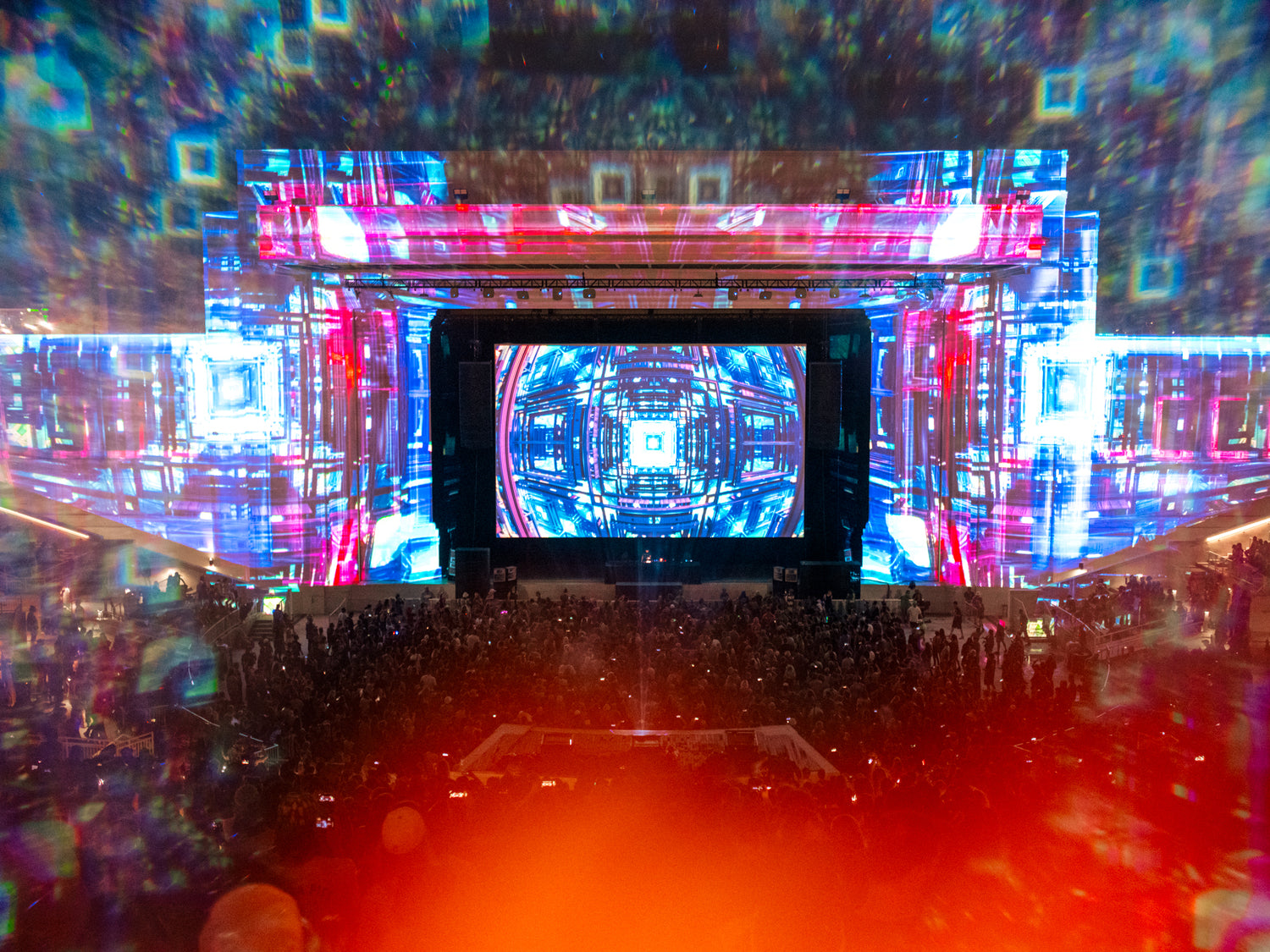
Photo by: Joshua Weichman
NS: I had read that you were heavily involved in the film industry before diving into creating fractals. Tell us a little bit about what you were doing in that field and how you eventually shifted from film to doing what you do now.
JH: From the age of 12, I always wanted to be a film director. After a few rejections from trying to get into film school, I decided to work in the film industry and learn all of the technical details on the job. Things like sound and camera assisting, lighting assisting, and picking up on the technical things. I was also kind of into 3D animation, so I was working with 3D Studio Max. At some point, I started working for more digital companies doing 3D animation logo creation and then went back to a visual effects company. So I was doing visual effects for film and commercials, but I always thought there was something more out there, like a creative itch. I wanted to make my own films and my own worlds.
At some point, I was writing a script and had seen a fractal on YouTube, which amazed me because I'd never seen anything like it. And I was very surprised that I hadn't because I watch a lot of films and no Hollywood film I had ever seen used this before. So then I started to write it into my story. When I was writing I thought, “Let's try to do a pilot,” and I started learning the fractal software, Mandelbulb 3D. When I first started to dive in, I noticed that, first of all, I was quite knowledgeable in compositing these types of things. While I was continuing to learn Mandelbulb 3D, I also had a render farm, which was always available to me because I worked for the visual effects companies. I could do a lot of rendering at the same time as creating animations that would otherwise not be possible on a single machine. So with all of that combined, I noticed that I could create really cool little films and little stories, almost very abstract with just fractals. And that's how it got started.
So then I was like, “Wow, I'm just going to publish these on the Internet” and then people started picking it up. Some blogs would publish them and I would have hundreds and thousands of viewers. Then I was like, “Yeah, this is great. This is a really nice creative outlet for me.”
NS: When you were first starting to experiment with fractals, were there any specific artists or individuals that you were drawn to or inspired by that influenced your early journey in that space?
JH: I didn’t really get a lot of inspiration from digital artists, specifically, but more so from music. I guess I see music very visually, almost as a synesthesia, and so a lot of musical artists definitely inspired me—mostly electronic music. A lot of soundtracks from films like the Avatar movies or The Lord of the Rings or Inception also inspired me. I remember watching the film Prometheus and I tried to create a fractal version of that using the tone and the color palettes of the film. Movie directors like Christopher Nolan and James Cameron were definitely among my top inspirational artists early on as well.
NS: After you had been experimenting with fractals for a bit and started getting your name out there, what were some of your first events? Were they more on the live music side of things or on the art gallery/exhibit side? Or was it something different?
JH: Yes, it’s a good question because a lot of this really started on the Internet for me. Vimeo was especially very big in the mid-2010s for getting this kind of stuff out there. One of the first events that I remember doing was in Montréal at the Society of Arts and Technology (SAT). They have this dome there and what’s interesting is they don’t use it for planetarium-style stuff, but actually for artistic movies and other live performances. So I did a movie for that dome. That event was very inspiring and definitely one of the first moments where I could actually see a live audience looking at the fractals that I made and seeing that this type of experience worked because of how people were reacting. I think the first art gallery I did was in 2018 at ARTECHOUSE in Washington, D.C. and then those types of events started to become a thing.
In terms of live music events, I've done a little bit of it here and there. I only do music events once a year or something like that. In the early 2000s — literally the year 2000 — I was VJing when I was doing very simple 3D Studio Max animations. I VJ’d using two VHS recorders and an analog mixer. So yes, I was doing that more back in the early days, but then I came back to it when I started doing fractals.
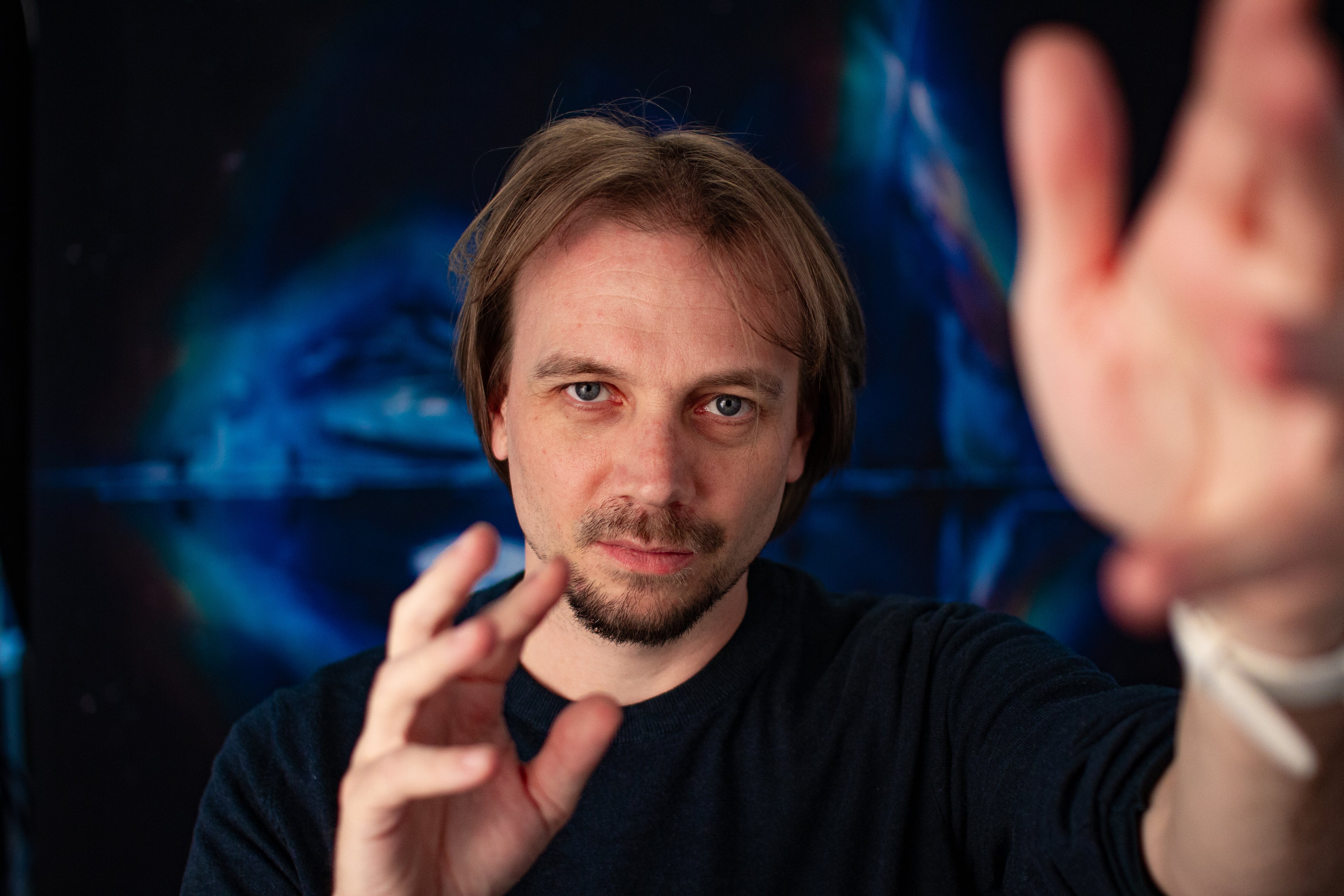
NS: You are one of the very best when it comes to creating these unbelievably intricate worlds with fractals using a piece of software called Mandelbulb 3D. Would you be able to give our readers a high-level overview of your process when you go in to create? Is it true that you only use Mandelbulb 3D and After Effects to create these worlds, or do you use anything else to fine tune? How do you create this ongoing effect where it seems like we're continuing to dive deeper and deeper into these worlds?
JH: Yes, it is true that I only use Mandelbulb 3D and After Effects. I also use some After Effects plugins that are basically just used for color correction. The plugin suites that I use are the Red Giant suite and, most specifically, the Looks or “Magic Bullet” suite.
Within Mandelbulb 3D, you're presented with a lot of options to create these fractals. I won't go into the details of how these fractals are made, but when you have a fractal shape, you can move your camera around like you are moving through a video game with the WASD keys on the keyboard. This is a very intuitive process where I try to make it feel like you're flying through these huge structures and trying to find the interesting spots. I can move towards them or move away from them, while also trying to create an interesting “sucked in” or “push / pull” effect. When you move closer and closer to a fractal surface, it keeps revealing more detail, which is one of the key aspects of fractals.
As you move closer and closer, you feel like the world is opening up and you're shrinking while the world is starting to become bigger and bigger. This is so important to get right because that is ultimately what makes fractals so awesome. And then when I go into After Effects, I’m literally only doing color touch ups or using some tricks to make the lighting look less flat. When you render from Mandelbulb 3D, it will look pretty flat, but with After Effects you can separate foreground and background and also give them different color values. So if you darken the foreground, for example, you can have this view where it looks like there is always light at the end of the tunnel and it makes for a much more interesting image.
NS: I read that there is some math involved when you're building these worlds. Do you have a background in math that allows you to take these worlds to the next level? Are there complicated formulas/equations that you have to memorize in order to build, or are they already preprogrammed in the software? Tell us a little bit about the math that's involved when you're creating your worlds.
JH: I have no background in mathematics other than a high school understanding of very simple math — I was not bad at math. In fact, I still use simple trigonometry in order to figure out what field of view my camera has to be in, but that is really the extent to my mathematical understanding. In terms of math and fractals, I actually do not really understand a lot of it to be honest, although I have some basic knowledge of it. You don't necessarily need any math to create the fractals that I make. It's pretty much all baked into Mandelbulb 3D, even though that is not an easy software to learn.
I don’t think a lot of people will run into issues related to their mathematical limitations when they try to use Mandelbulb 3D. Rather, they will have issues with the user interface and with understanding how the render process works. Understanding things like ray marching and ray tracing as well as ambient occlusion is probably a much more needed skill than understanding what the irrational numbers or the complex plane is. I would say my knowledge of mathematics is more intuitive, so if you play a lot with these fractals, you get an intuitive understanding of what the different formulas do at some point, but it's nothing to do with a mathematical understanding. They're not preprogrammed in any sort of way because there are just too many variations. But while “pre-programmed” sounds a little bit simple, you could technically say that the mathematical formulas are pre-programmed in the software and you don't have to understand the math.
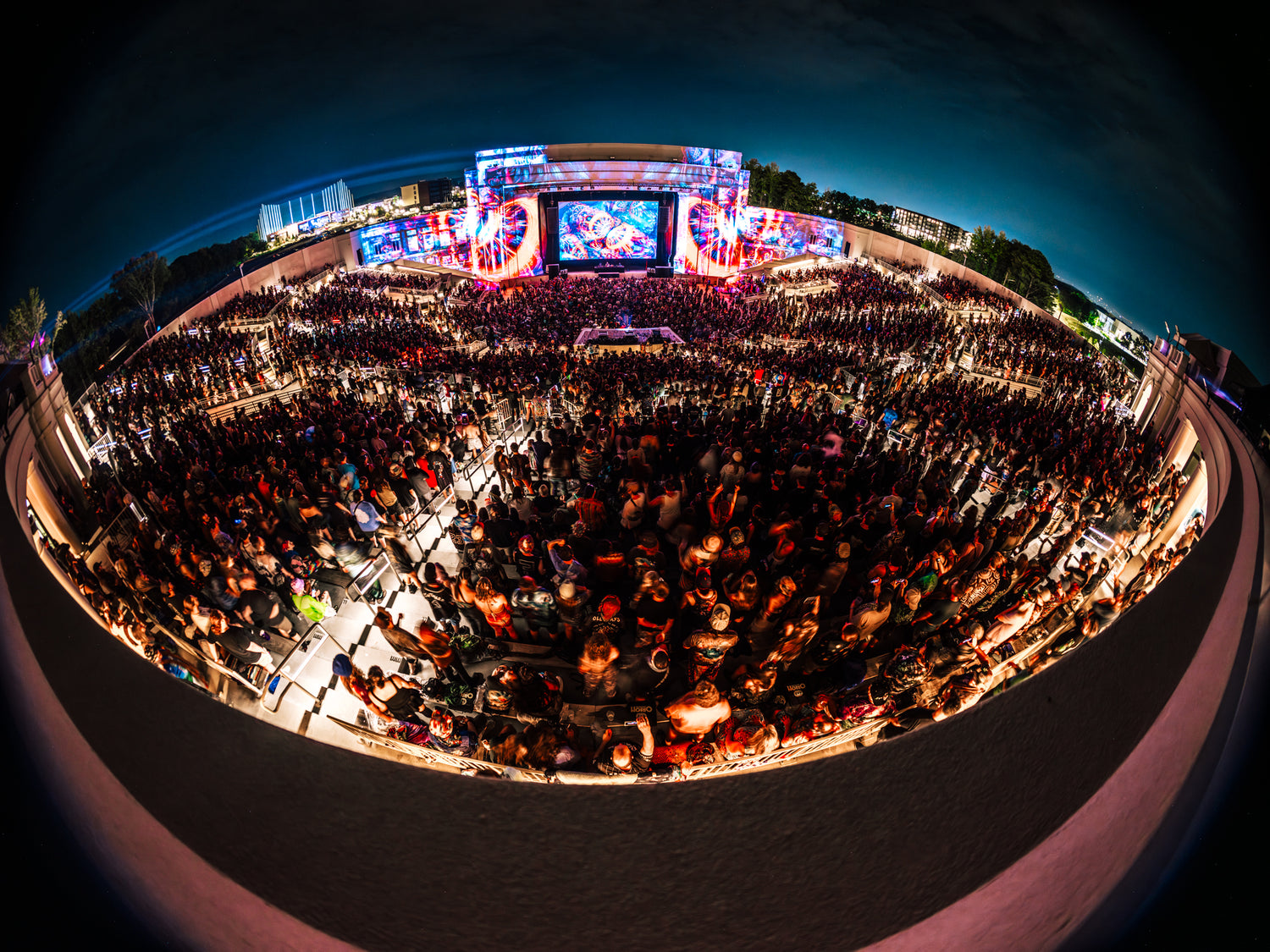
Photo by: Joshua Weichman
NS: You blew everyone away when you performed with Tipper at the Orion Amphitheater over Labor Day Weekend. Tell us a little bit about your experience performing at an intimate, yet massive event like that. Have you performed at any other live music events in the United States prior to Tipper & Friends?
JH: First of all, thank you! I'm very happy that it was received the way it was. I think “intimate, yet massive” is a perfect descriptor of what it felt like. To have something so intimate with 8,000 people is pretty special and I think these Tipper events can do that like no other event that I've ever seen. This was probably my best live event that I've done. It’s definitely the one that I am the most proud of, and I think the synergy of the visual team and the amazing music in this great venue made it all come together in a really special way that was felt by everyone. I wish that there could be more of these types of performances. It's pretty rare, definitely in Europe. I don't think something like that could ever really exist over there.
I think I have only performed twice at live music events in the U.S. prior to Tipper & Friends. One was at the Wisdome LA in 2019 when I was doing live dome visuals for Bluetech and Desert Dwellers. The other was this short VJ set at Fractal Fest in 2022 in Massachusetts—but nothing that even comes close to something as big as Tipper & Friends. I was very humbled to be allowed to present the fractals at such a beautiful venue.
NS: The Orion event included one of the most iconic visual b2bs with Jonathan Singer on the final night for Tipper's ambient set. What was it like to work with a fellow legend and pioneer like Singer for such a momentous occasion? Have you guys ever performed together like that before?
JH: Again, thank you for the lovely words! I had never performed with Singer before prior to that night. I think I only met him once before, which was at another Tipper & Friends event in 2019. Actually, now that I think about it, I also did a very short VJ set at that Tipper & Friends event at Suwanee in 2019. Being from Europe, I don’t really know much about the whole “Tipper scene”. I've only really come to learn about it in the last few years. So, I think I heard about Jonathan Singer for the first time in 2019, met him at Tipper & Friends that same year, and then I think we have just been talking online here and there since. He seems like an extremely talented artist.
We talked a little bit before the set on how we were going to go about it. He took some of my work and had been creating effects with it and then we had to figure out how we were going to do this set. I think we were both a little nervous and unsure of how it was going to go because this was the first time we were doing something like this before and it was such a big stage. He has been doing this a lot longer than I have and I only do live visuals once a year, if that. But from the moment it started, we both felt very confident in what we were doing. It felt very organic. He understood me, I understood him and we both felt that it went really smoothly. It was really great to work with him and I'm looking forward to doing that again.
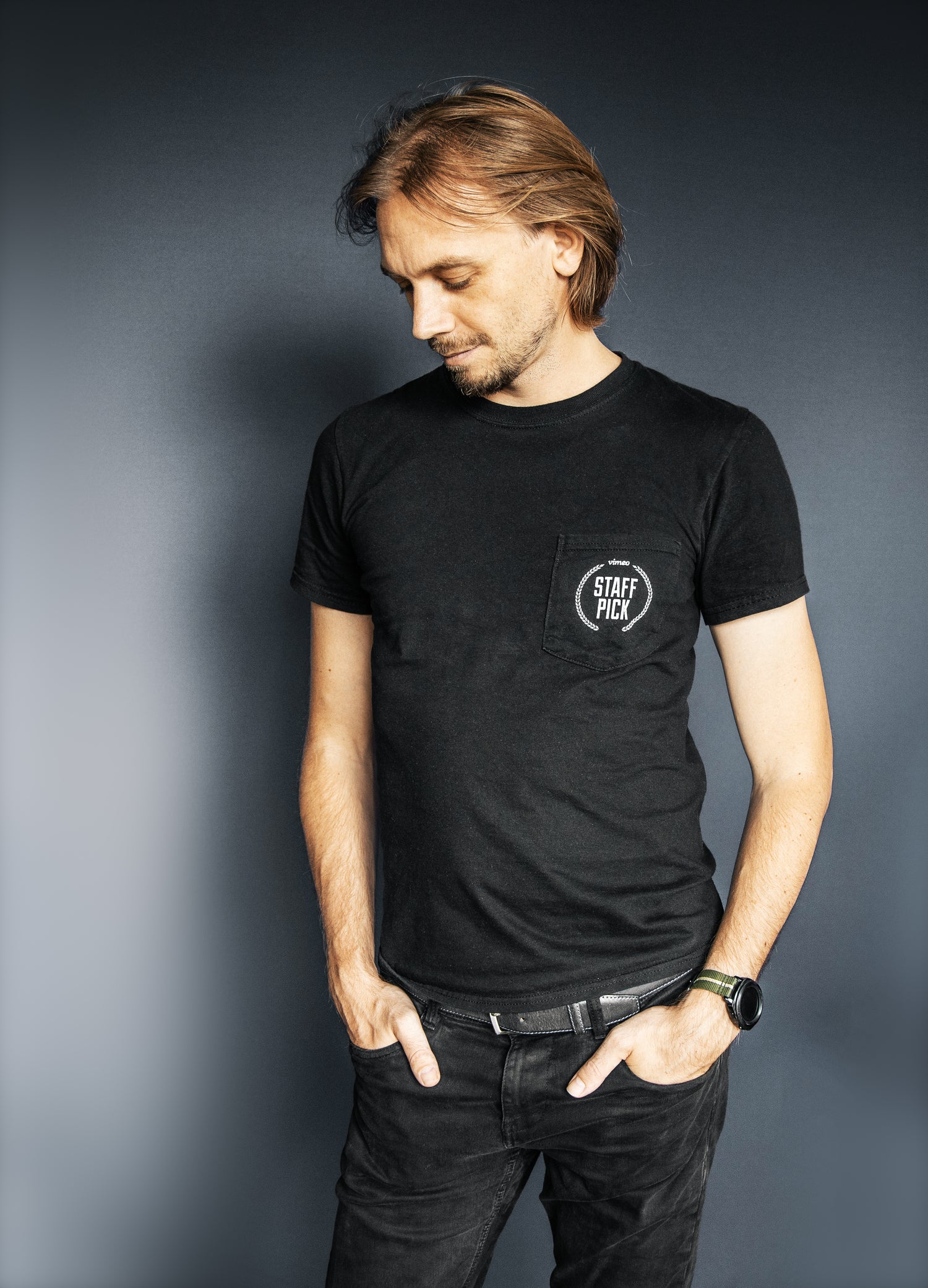
NS: As part of your visual career, you have presented your worlds to different audiences all over the globe via unique art galleries. How do you prepare for an art exhibit versus a VJ set? What are some of your most favorite art exhibits that you have presented? (What were they? Where were they exhibited?)
JH: When you prepare for a VJ set, you obviously want to prepare clips that you hope fit specific moods and tonal sequences using color palettes as well as speeds of the music that you anticipate will be played. You want to try to get as many of them as you can so that you can have a broad enough library to pull from once specific music is played.
For an art exhibit, in my opinion, it's much more like filmmaking. The art exhibit is really just an immersive film, and it's played on the walls and on the floor instead of a screen. But it's much more like filmmaking in that it has, what I call, an emotional arc, which is basically where the music and the visuals sort of climax in a way, or where certain scenes are a bit more quiet. And then from there, you can fill in the different fractals and play it back a million times, and then you can edit it, throw out the fractals that you don't like, and put in the ones that you do like. That's something I'm much more comfortable with as well because I'm much more experienced with that type of work. So that's how I create these arts exhibits, and usually you work together with a composer on adding the right music.
I think one of my most favorite art exhibits is still the one I did in the U.S. at the ARTECHOUSE in New York. There’s a piece called Geometric Properties, which is actually playing again there now as part of the five-year anniversary of the gallery, I believe until November. It's a 30-minute, very immersive movie that’s also a very slow and deep fractal piece. Definitely one of my favorites. The other one that I really like is called Foreign Nature, which has actually only played in Europe. It was made for the NXT Museum in Amsterdam, my hometown, and it was also picked up by Atelier de Lumières in Paris as well as Bordeaux. It will also be playing next year in Dortmund and Amsterdam.
NS: I had read one of your blogs in response to a couple of misleading articles that were published back in 2017 about one of your short films and was surprised to read that you had a problem with the term “fractal art". Is that still the case today in 2024? Can you explain a little bit to our readers what you meant by that? How do you view fractal art versus the more conventional art?
JH: I have to think back about what I wrote in 2017. It sort of sounds like the people may have written about a film of mine and labeled it as AI art, and I may have said that I don't like the term “fractal art” mostly because it is associated with a sort of 2D-fractal, trippy 1990s era, cheap computer graphic style that I don't identify with. I don't have a problem with the term “fractal art” now and I don't know exactly what I meant by that back then. I do think my work is best described as “fractal art” and I call myself a fractal artist. I use fractals haha there's no getting around that fact. But yes, I do think that a lot of people think of something else when they hear the word “fractal”.
In fact, I actually remember one of the guys who was a technician at the Orion event helping us install all of the projectors. Super nice guy, and I remember him saying something along the lines of “I hope it’s not going to be just a stupid fractal” and I immediately understood what he meant. Of course, I had to push back on him and be like “Hey, you don’t like fractals?” He obviously didn't know that I was a fractal artist. But, I think what he meant was like a cheap After Effects fractal plugin that, on the face of it, will make something look interesting, but it also makes it look pretty cheap and cheesy. I think that's mostly what my gripe is with this.
I'm actually not fundamentally very interested in fractals. Fractals have always been more like a means than the ends. Fractals are, of course, very interesting and very fascinating, but only because they allow me to create worlds that are so intricate and interesting that I couldn't do with just modeling in 3D Studio Max. And that is what actually fascinates me; I keep being surprised by these worlds because they look like spaceships and cities and underground worlds. That is why I like fractals. And fractals have this beautiful relationship with nature, which is probably why it does what it does, but I think that's probably what I meant in that 2017 quote.
In terms of how I view fractal art versus more conventional art, there is a lot of conventional art that I love and there is a lot of conventional art that I hate. This is especially because I'm very much into film. And of course film is art, but I think I'm much less interested in art when it’s still images, like paintings or photos. I have never really been fundamentally interested in those because I love it when art has the dimension of time. In fact, I think it needs to have that dimension. So both music and film, for example, have a time dimension. I’m much more interested when art has that time dimension versus looking at 2D or 3D sculptures and paintings.
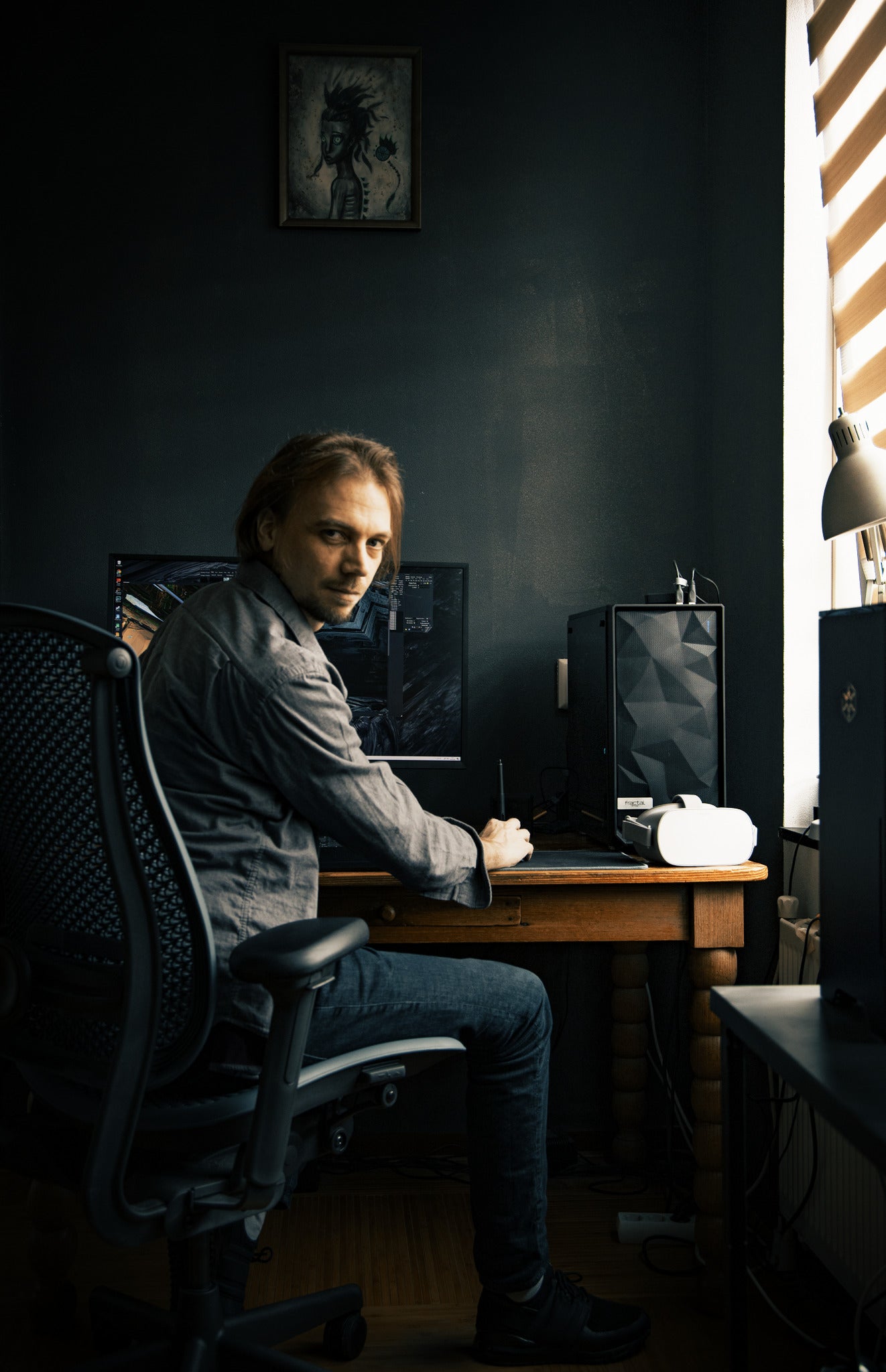
NS: What music do you enjoy listening to in your free time? Are there any musical artists that have influenced some of your fractal worlds? Are there specific artists you listen to when you go in to create your worlds?
JH: Music has always been a huge influence. I absolutely love music. My father is a composer, so I grew up around a lot of music, whether it was listening to it, playing instruments, or even trying to make beats when I was like 17 or 18. I was just never really good at all of those things. People never really responded to it and sometimes I would really like something that I had made, but then I would listen to it the next day and decide that yeah, this is not good. So it was never really satisfying for me to make, but I'm still very much into music and I wish I could do even a tenth of what some of my heroes can do.
Growing up, I was always listening to soundtracks from films. Artists like Hans Zimmer and Éric Serra, who created the soundtracks for movies like Léon, The Big Blue and the James Bond movie Goldeneye. I think I listened to those CDs over 100 times. Those were definitely a huge influence to me as a kid. Film soundtracks make everything interesting. Like when you're riding in a bus looking out the window, for example, and you listen to a soundtrack and then the whole journey becomes this really cool action movie. I think I still see that in these fractal worlds.
Today, I still listen to a lot of film music. I actually got to work with Éric Serra, so that was a huge moment for me to meet my childhood hero. I also listen to a lot of electronic music, of course. Mostly music with no lyrics. I don't really like meaning or words too much. Max Cooper is one of my favorites. I have so many on my playlist—Ott., Shpongle, Tipper obviously, and a lot of other musicians that I've worked with on pieces I’ve made, like Recombination. They are pretty much all my heroes. Some other names that come to mind are Desert Dwellers, Ben Lukas Boysen, and Michael Stearns, who I've actually worked with as well—he made these amazing soundtracks and ambient music for the film Baraka, I think Baraka is still one of my very favorite soundtracks of all time, and I'm extremely lucky to have been able to work with him and call him my friend.
So yes, my musical taste ranges from very ambient to orchestral to very fast electronic music with actual beats. But they all have one thing in common, in my opinion—the music I listen to is what I like to call “visual music”. It's music that is very structured, just like how a film would be structured, and not like how a lot of pop music is structured, which is more “Verse One, Verse Two, Chorus, Verse Three, Verse Four, Chorus”. That kind of structure doesn't really interest me, even though the music can be great.
NS: Anything else our readers should know about you? Any other events planned for the rest of the year?
JH: I don't think I have anything else specific or very interesting to add. In terms of other events that are planned, we’re doing one here in the Netherlands that is more of a Classical piece with the music of Edvard Grieg - Peer Gynt. Some of the songs from this are probably familiar to everyone, even though you might not know the name. We have a small ensemble with a quartet, strings and piano playing live underneath a dome of fractals. These pieces are played in planetariums in Dutch towns Groningen, The Hague and Amsterdam.
I would love to do more of those types of events. Maybe not Classical pieces, specifically, although it would be great to do something with an entire orchestra in a huge venue like the Cosm Domes or The Sphere in Las Vegas. I think there are amazing things to be done with a proper orchestra or really broad electronic sound that is great, and I would like to do more of those, but for now it's these things here in the Netherlands and there are some art exhibits that I work on. Other than that, I don't have any events planned.
